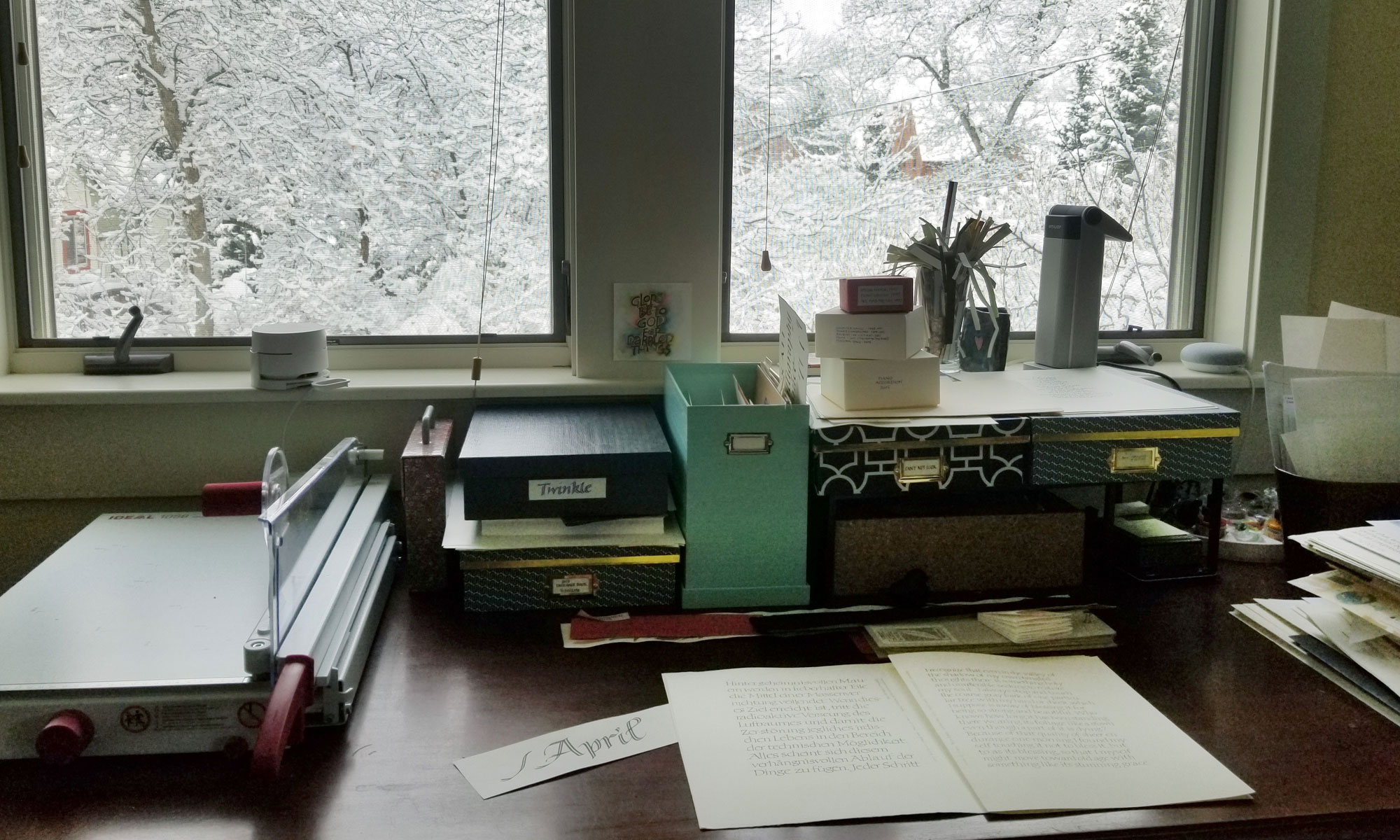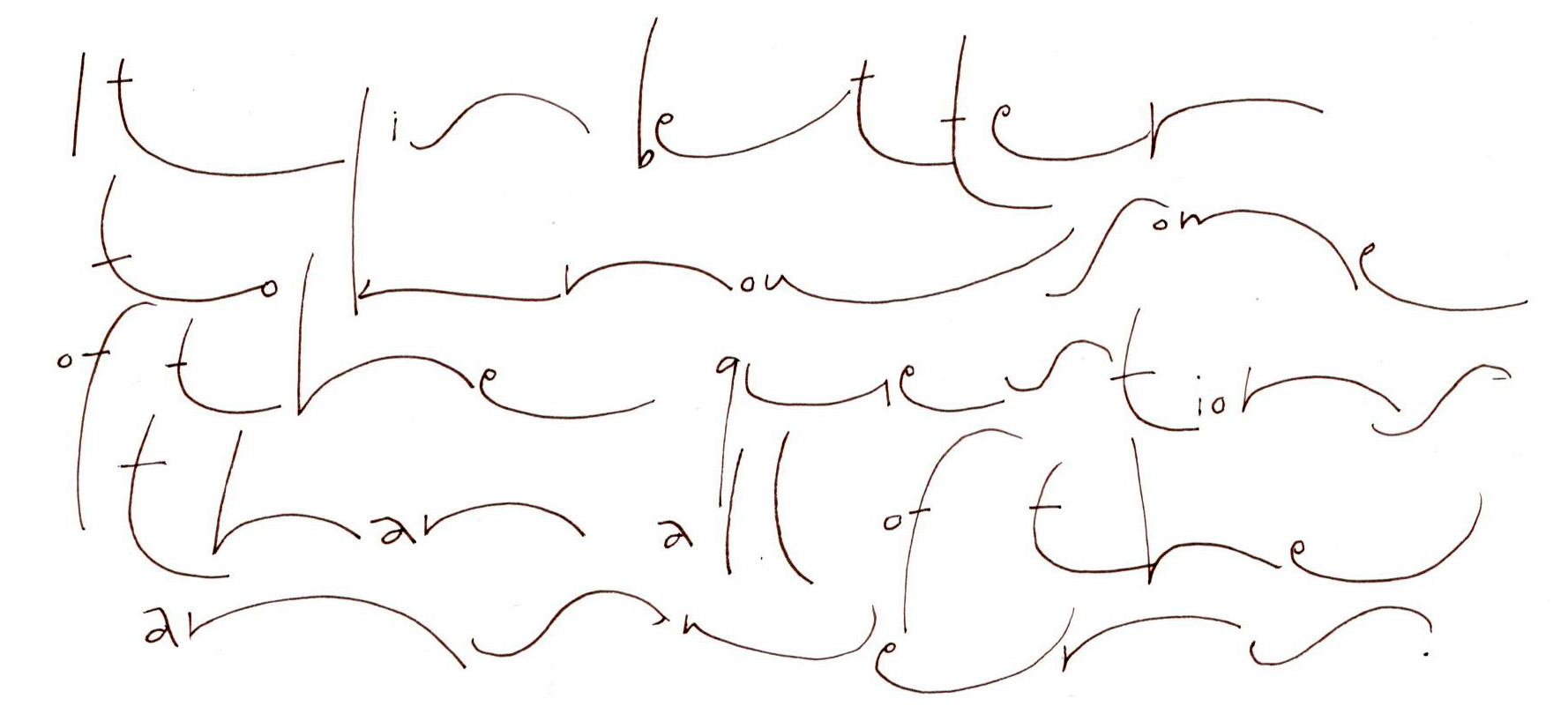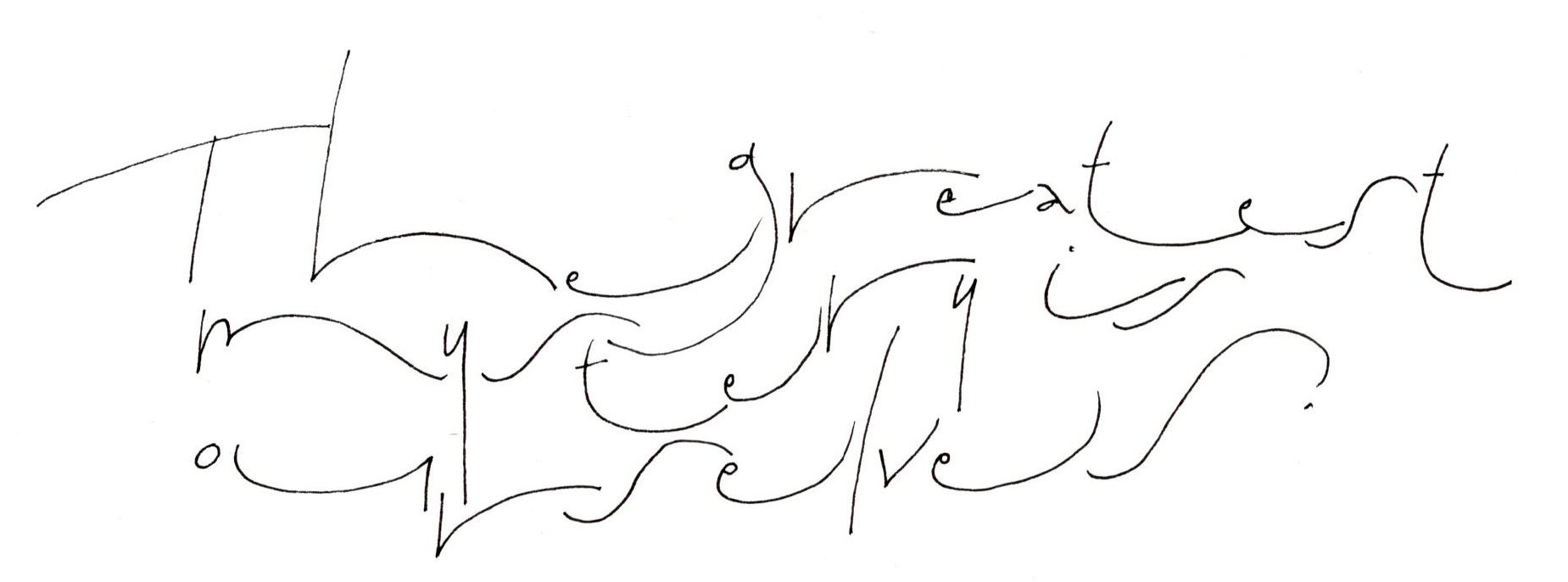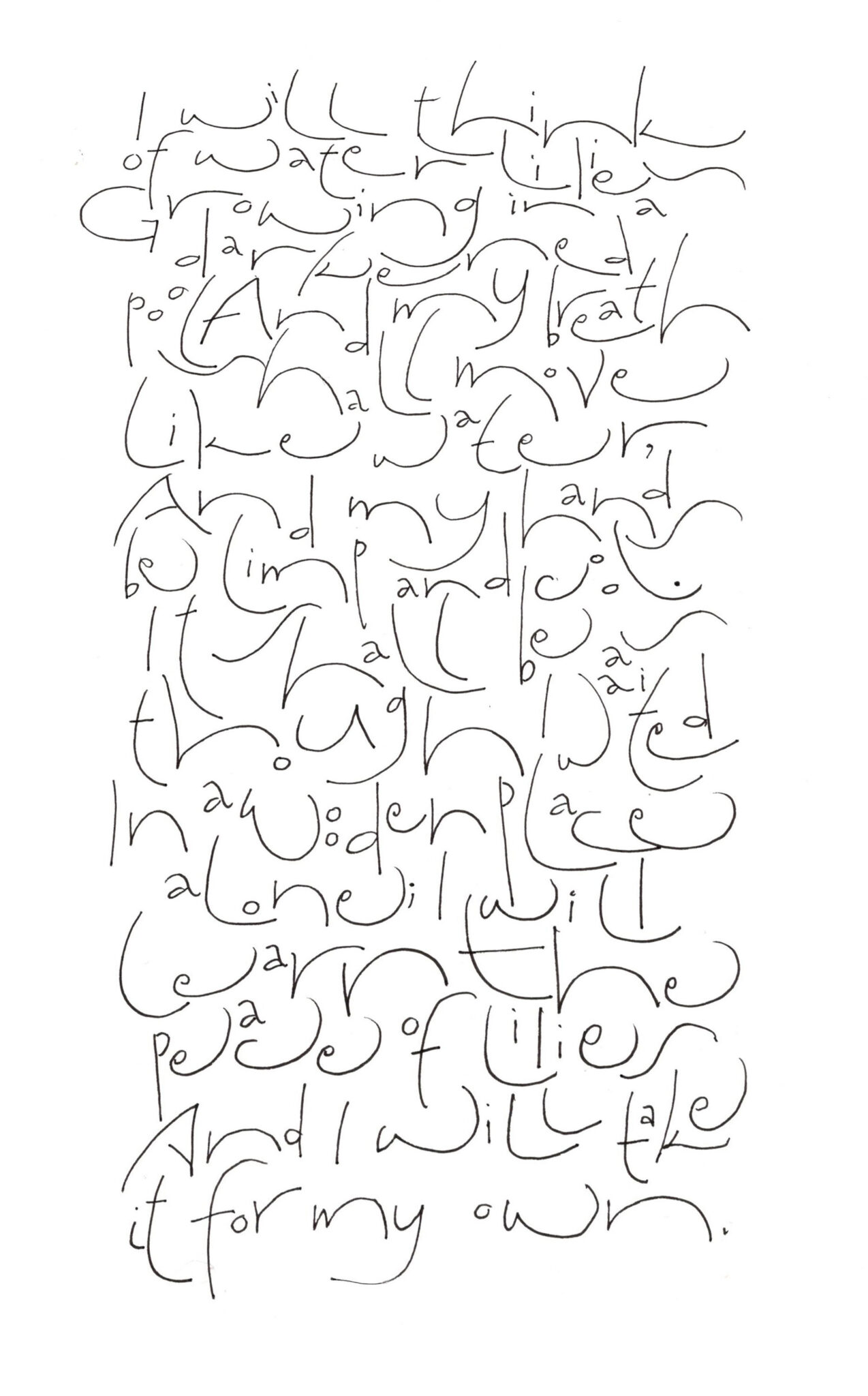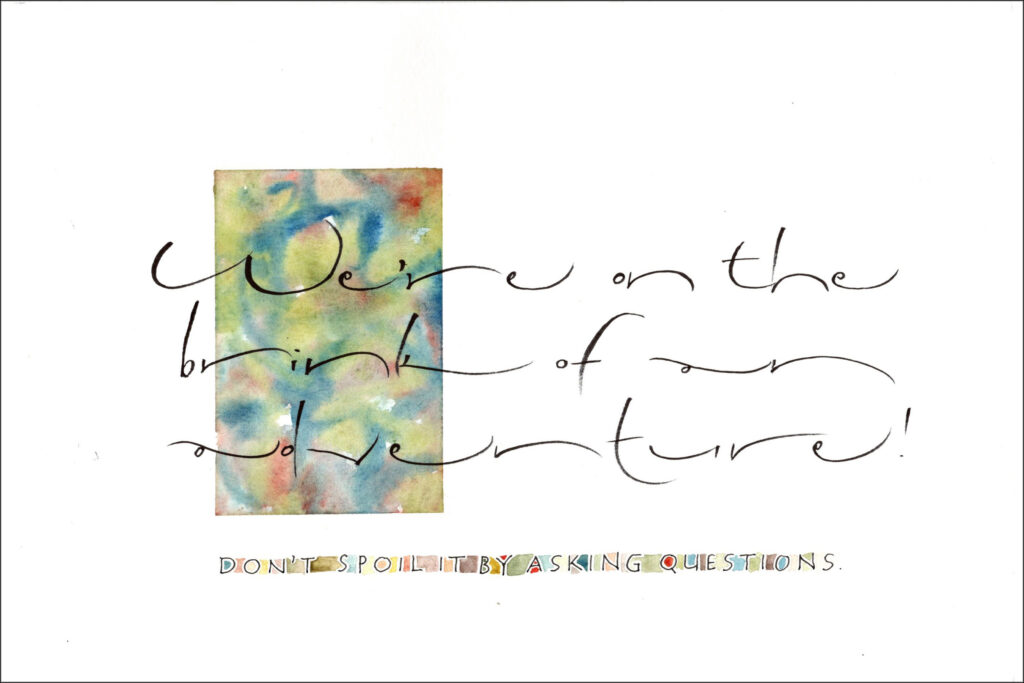
I’m continuing to enjoy Akim lettering. I made these in preparation for next month’s local guild meeting. Even though I switched to a brush pen for the main lettering, I tried for a fairly monoline effect. I love doing Akim lettering with a brush pen.
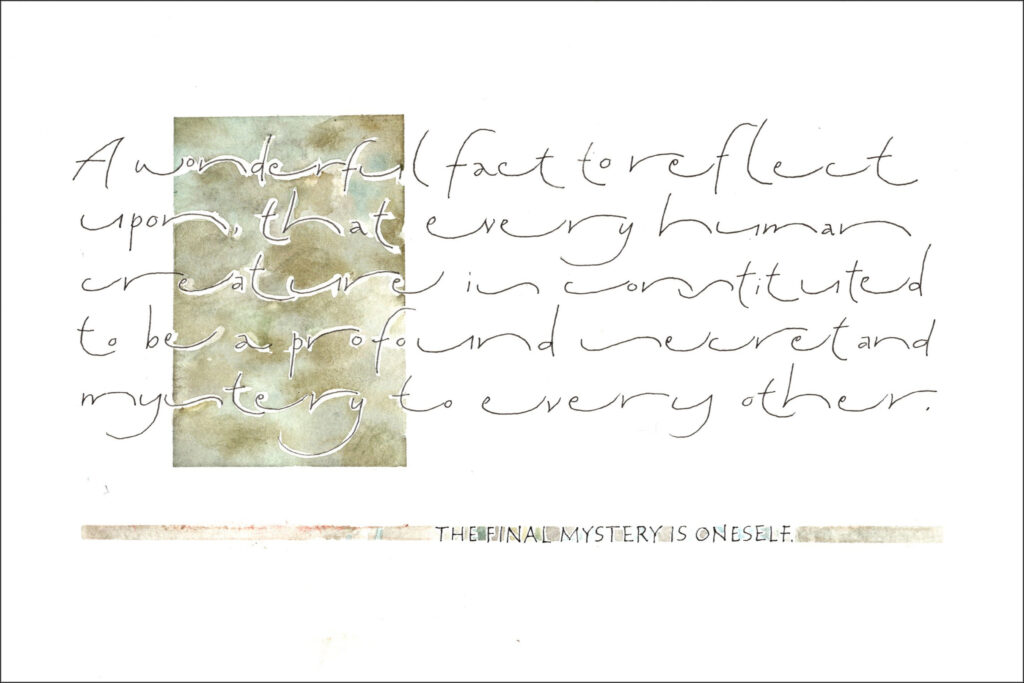
Here I used the same palette as for the first one, but mixed neutrals. After I penciled in the box and did the main lettering, I went over the lettering inside the box with Pebeo masking fluid and a bowl-pointed pen (didn’t want to ruin my tiny brushes). Then I painted in the box. When the paint was dry, I removed the masking fluid with a rubber cement eraser. I had done a pretty bad job of tracing the lettering, but that was all right. And where it was just too egregiously out of whack I painted some neutral back in and blended it with the rest of the painting.
